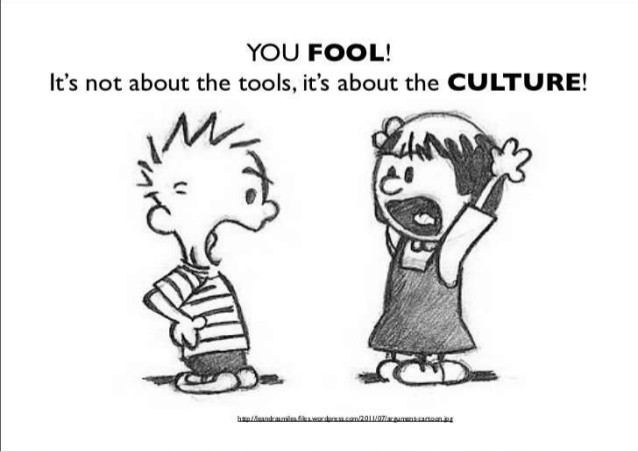Inclusion. Diversity. Employee experience. Employee engagement. Talent strategy. Emotional intelligence. Employee retention. All of these things hang out under the rubric of culture. According to Merriam Webster, culture is “the characteristic features of everyday existence… shared by people in a place or time.” It’s also “the set of shared attitudes, values, goals, and practices that characterizes an institution or organization.” Key to both definitions is the word “shared.” And therein lies the challenge of corporate culture today. Perhaps once, in the 50’s, when white men ruled the corporate sphere and the shared culture was white, male, Christian and the kind of American that came with that, then there was a shared culture. People knew their place and, for most women, people of color, non-Americans, their place was not the corporate world. That framework began to shift with globalism, civil rights, and the women’s movement, and non-white, non-Christian, non-male people began entering the workplace. But the cultural behemoth of mainstream corporate structure still held sway and all people were asked to fit themselves into that structure. Which worked well for some people and didn’t work — and still doesn’t work — for a lot of people.
And now these crazy, shifting times of globalism and entry into the corporate cultures (though not so much at the helms) of an incredible array of people who are saying, “Hey, your corporate structure doesn’t work for me!” and shared culture is, hey presto, a thing of the past! Which is confusing for everybody. Holidays? Maternity and paternity leave? Flexible work schedules? Communication styles? Work/life balance? Mix that up with the generational difference between Boomers, Xers and Millennials and shared culture is dead on the floor.
So what’s a leader to do?
Breathe!
No, seriously. Being mindful is truly a first step. It allows you to slow down just enough to start asking questions and becoming aware. To know something isn’t working is to first become aware that something isn’t working and then have the humility and vulnerability to ask what isn’t working.
Next step, check in with your people who are a collection of diverse individuals with their own gifts and talents who happen to be travelling the same path with you for awhile. They have excellent ideas and perspectives to tap into.
Bill Taylor wrote this great piece for the Harvard Business Review of the 5 Questions to Ask About Corporate Culture to Get Beyond the Usual Meaningless Blather and he brilliantly uses the words “culture shock.” I love it that in this context, he is offering a shock to culture itself rather than the more common usage of people experiencing disorientation from unfamiliar patterns of behavior usually associated with culture shock. The great thing about this usage is that after you shock the culture, be prepared for culture shock as people attempt to integrate and create new patterns of culture. Maybe even to truly develop a new shared culture.
Because that’s at the essence of a highly successful company: shared culture centered around an understanding of purpose, corporate values, brand and mission with as much internal emphasis on achieving success as external emphasis. As Bill writes there are “…so many leaders who are brilliant when it comes to product design and capital structure but who treat the people in business as an afterthought, a matter of sound administration as opposed to daring innovation.” I too have seen fabulous organizations fail because they have not the aligned their internal culture with their external mission. Instead of tapping into the brilliance that first attracted workers to this mission, the toxic culture chewed them up and spit them out and the brilliance walked right out the door to find a better environment.
If you’re a start up on the verge of expansion, now is exactly the moment to think about culture and to allocate resources to that part of the business. If you’re an established business, it’s not too late but it is right on time to begin exploring what exists, if your organizational culture is working, and exploring how to create a truly dynamic, flourishing and hopefully shared culture. Be a truly great leader and think as much about organizational culture as about how you achieve economic and brand success.

